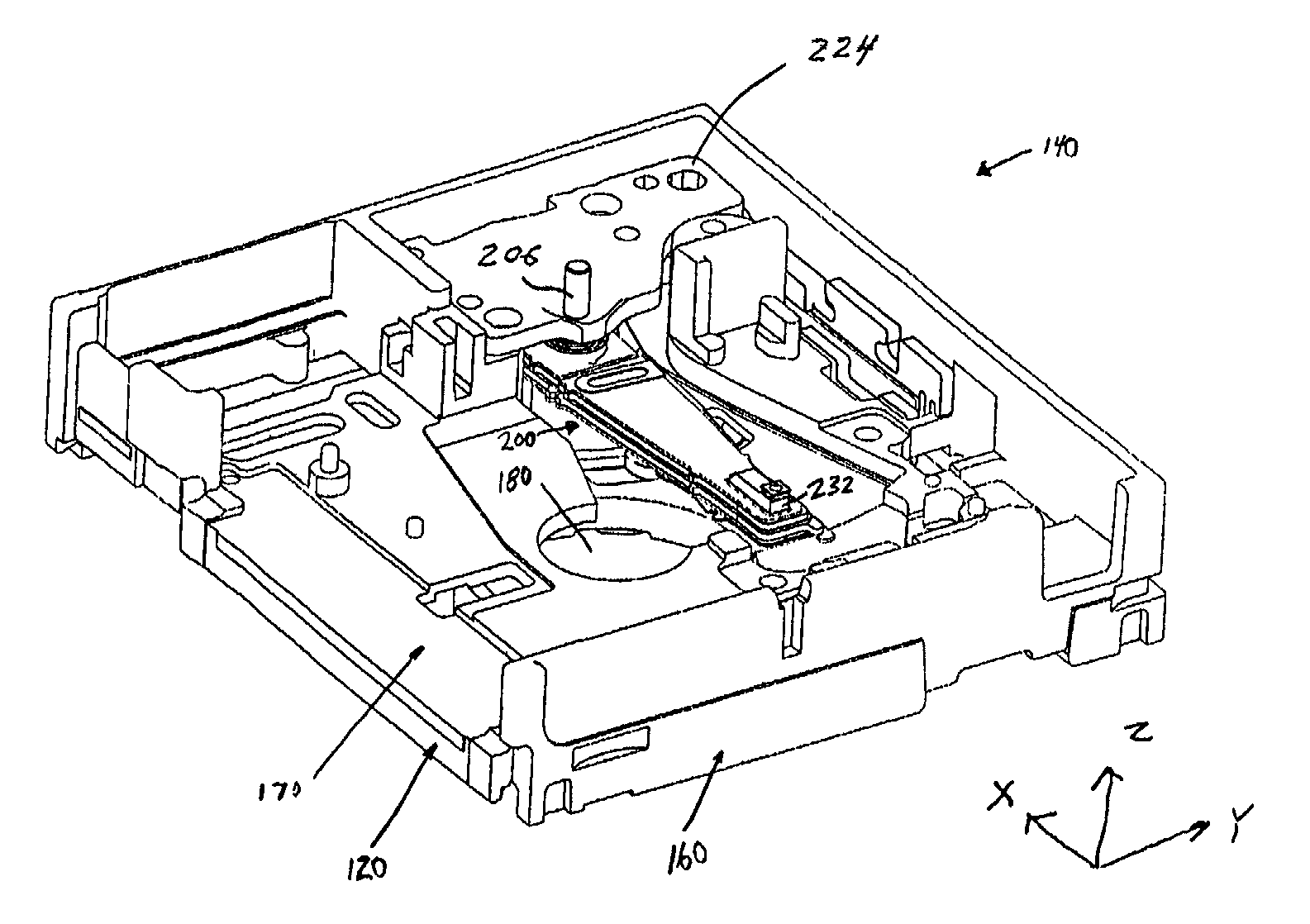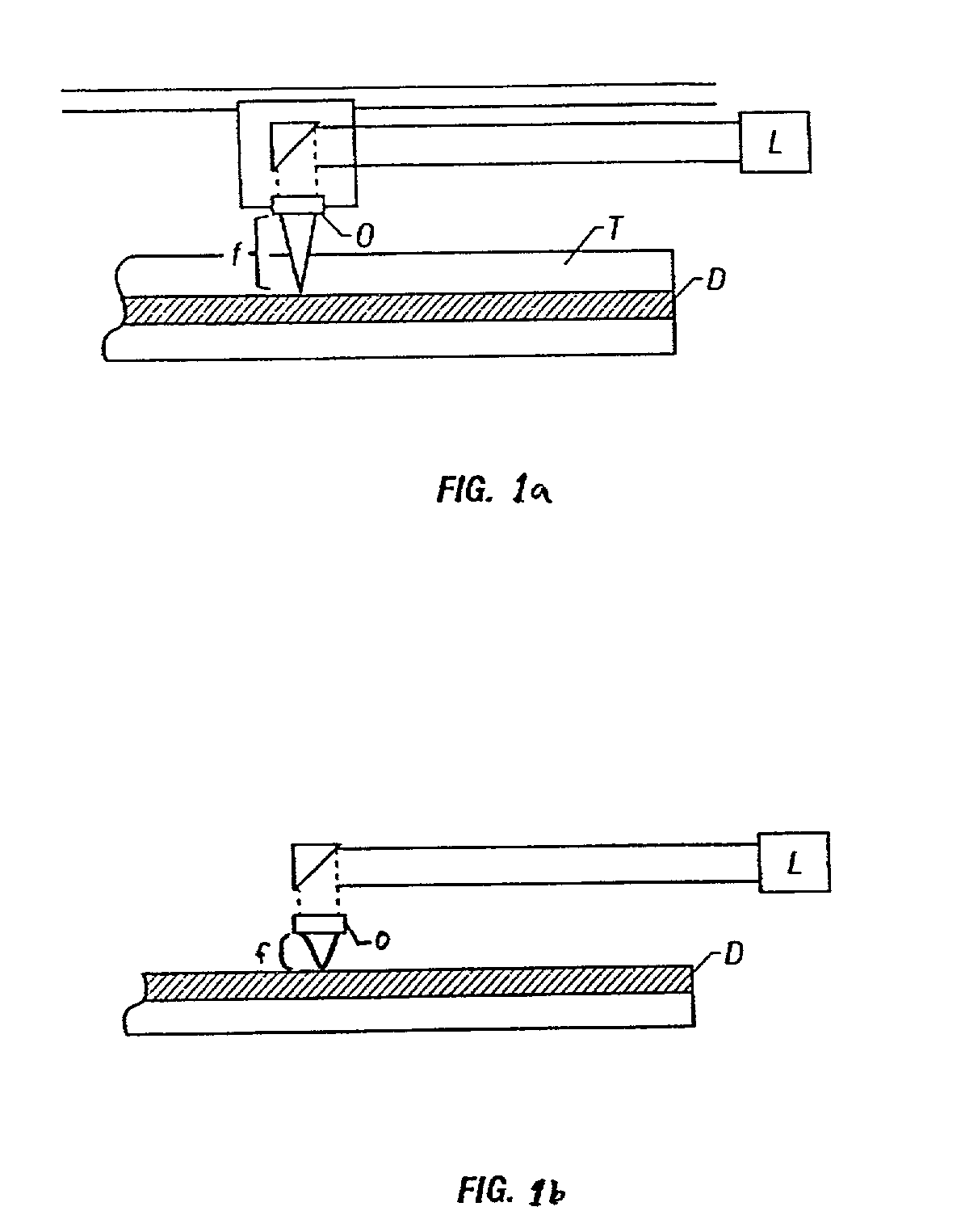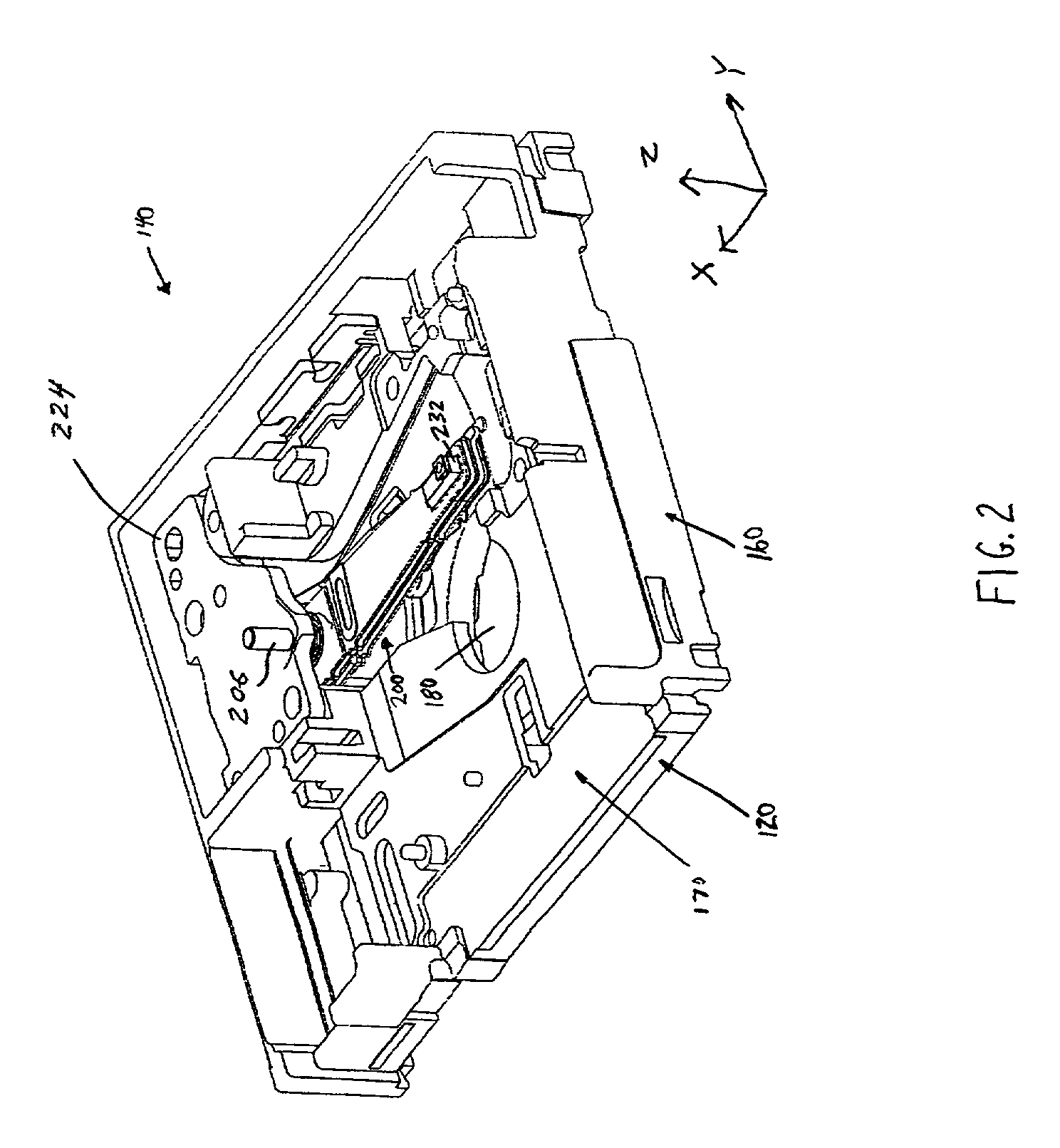Fringing field focus motor and mechanism for optical disk drive
- Summary
- Abstract
- Description
- Claims
- Application Information
AI Technical Summary
Benefits of technology
Problems solved by technology
Method used
Image
Examples
Embodiment Construction
[0029]Turning to FIG. 2, a first embodiment of an actuator arm 200 is shown within the housing 120 of an optical drive 140. The housing 120 includes a base plate 160 having an aperture 180 for receiving a spin motor (not shown) and a slot 170 to receive a cartridge containing an optical disk (not shown). A cartridge is inserted into the slot 170 and engages the spin motor. An optical pick up unit (OPU) 232 is positioned at the distal end of the actuator arm 200 and directs a light beam (not shown), such as a laser, to an optical disk within the cartridge which is spinning at a rapid rate. The light beam may be used to write information to the disk or may be used to read information resident on the disk. Because information is stored on the disk in tracks, typically spirally or concentrically arranged, the OPU 232 must be able to traverse the surface of the disk from the inside to the outside diameter in order to access the information formatted on the disk. To accomplish this, actua...
PUM
 Login to View More
Login to View More Abstract
Description
Claims
Application Information
 Login to View More
Login to View More - R&D
- Intellectual Property
- Life Sciences
- Materials
- Tech Scout
- Unparalleled Data Quality
- Higher Quality Content
- 60% Fewer Hallucinations
Browse by: Latest US Patents, China's latest patents, Technical Efficacy Thesaurus, Application Domain, Technology Topic, Popular Technical Reports.
© 2025 PatSnap. All rights reserved.Legal|Privacy policy|Modern Slavery Act Transparency Statement|Sitemap|About US| Contact US: help@patsnap.com



